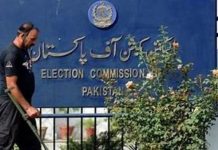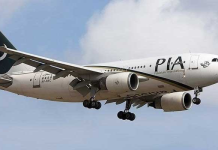Islamabad recently witnessed the vibrant celebration of the 58th ASEAN Day, marking the founding of the Association of Southeast Asian Nations (ASEAN) in 1967. The event, attended by ASEAN envoys, Pakistani officials, diplomats, and members of civil society, was not just a ceremonial occasion but a reaffirmation of ASEAN’s commitment to deepening ties with Pakistan.
Representatives from ASEAN member states — including Brunei Darussalam, Indonesia, Malaysia, Myanmar, the Philippines, Thailand, Vietnam— underscored their shared vision of strengthening cooperation in political, economic, cultural, and people-to-people domains. Speaking at the reception, ASEAN envoys emphasized that Pakistan remains an important partner for the region, offering opportunities in trade, investment, tourism, and education.
Pakistan’s trade with ASEAN countries currently stands at a modest level compared to its potential. ASEAN collectively represents one of the world’s fastest-growing economic blocs, with a combined GDP of over $3 trillion and a consumer base of more than 660 million people. This makes it an attractive market for Pakistani exports, including textiles, agricultural products, surgical instruments, sports goods, and IT services.
Experts believe Pakistan should prioritize negotiating trade facilitation measures and reducing tariff barriers to boost exports to ASEAN markets. Conversely, Pakistan can benefit from importing technology, electronics, machinery, and expertise from ASEAN to modernize its industries and diversify its economy. Initiatives such as preferential trade agreements or a free trade pact under the Pakistan-ASEAN framework could provide the much-needed push for economic integration.
Economic ties alone cannot define a lasting partnership. People-to-people exchanges, including tourism, academic linkages, cultural programs, and sports diplomacy, play an equally vital role. ASEAN’s cultural diversity resonates well with Pakistan’s own rich heritage, offering numerous opportunities for collaboration.
Visa facilitation and direct air connectivity between Pakistan and ASEAN countries could open new avenues for tourism and business travel. Student exchange programs, joint research initiatives, and cultural festivals could further bridge the understanding between societies. Sports exchanges — such as the recent kayaking activity organized for diplomats and sports enthusiasts in Islamabad — also contribute to building informal but impactful bonds.
Geographically, Pakistan enjoys a strategic location linking South Asia, Central Asia, and the Middle East. This position could be leveraged to become a hub for ASEAN’s trade with these regions, especially through initiatives like the China-Pakistan Economic Corridor (CPEC). ASEAN’s growing interest in regional connectivity and Pakistan’s infrastructural development goals make this a natural area for partnership.
Diplomats and analysts agree that both sides must work towards institutionalizing their engagement, possibly through an annual ASEAN-Pakistan dialogue at the ministerial level. Joint business councils, academic consortiums, and cultural forums could ensure consistent progress beyond high-profile events.
As ASEAN celebrates over five decades of unity and progress, Pakistan has an opportunity to align itself more closely with this dynamic bloc. By deepening trade ties, enhancing connectivity, and fostering people-to-people engagement, both sides stand to benefit. The message from the ASEAN Day celebration was clear: the future of ASEAN-Pakistan relations is full of promise — but it will require vision, commitment, and proactive diplomacy to realize its true potential.

















